8 Architectural Marvels Inspired by the Summer Solstice
For those of us in the Northern Hemisphere, June 21 marks the summer solstice, the longest day of the year. Heralding the official beginning of summer, this solstice is a cause for celebration, with colorful festivities happening around the world, from maypole dancing in Scandinavia to mass yoga in New York's Times Square. But solstice also offers the chance admire the expertise of the architects of the ancient world who painstakingly designed temples, pyramids, and other intriguing buildings to align precisely to the movement of the sun—critical to ancient cultures dependent upon knowledge of solar movements for successful harvests. Here is a look at constructions around the world that were inspired by this day of the year.
Temple of the Sun, Peru
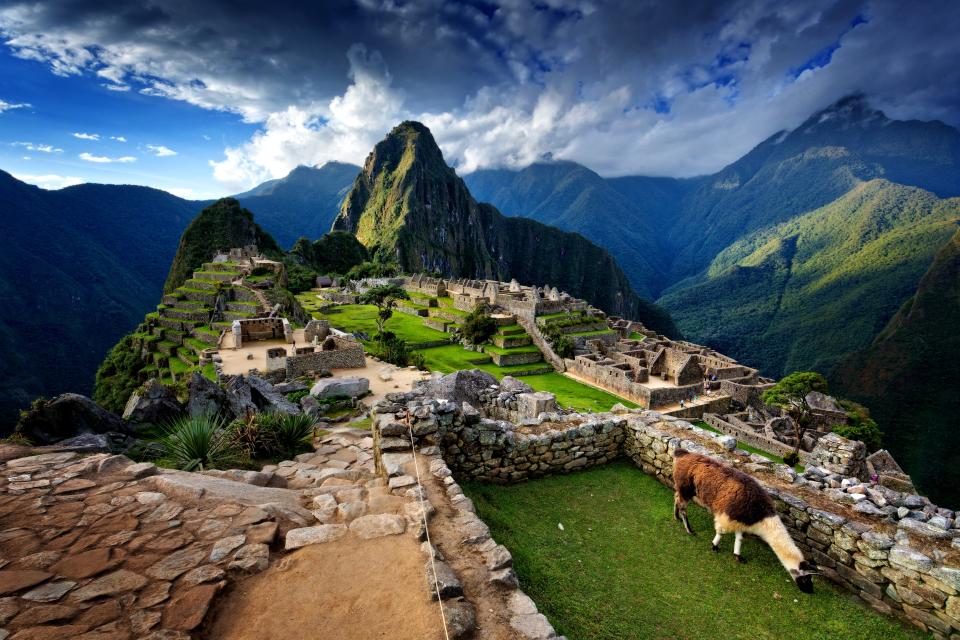
Llama standing by stone steps leading up from old ruins of Machu Picchu, Peru, spring evening
Photo: Getty ImagesJune in the Southern Hemisphere brings the winter solstice. The Incas worshipped and believed themselves descendants of the sun and so, in the semi-circular Temple of the Sun at Machu Picchu in Peru, they built a window so that on the winter solstice the sun would shine through it and light a specific spot carved on a sacred rock. A similar window is found in Peru's Temple of the Sun (“Qoricancha”), in Cuzco, the ruins of which form the foundation of the Santo Domingo Church, a colonial structure that, though built by the Spanish, incorporates Inca stonework. Cuzco celebrates winter solstice with Inti Raymi, meaning “Festival of the Sun” in Quechca. The ceremony (on June 22 this year) starts at the atrium of the Santo Domingo Church before continuing on to Sacsayhuaman. One can get an unparalleled view of the festivities by staying at the Palacio del Inka, a storied hotel whose walls once functioned as part of the Temple of the Sun complex and have remained intact, even through several renovations, the most recent of which was completed in 2013. Six suites directly overlook the church and the remains of the Inca temple.
Stonehenge, England
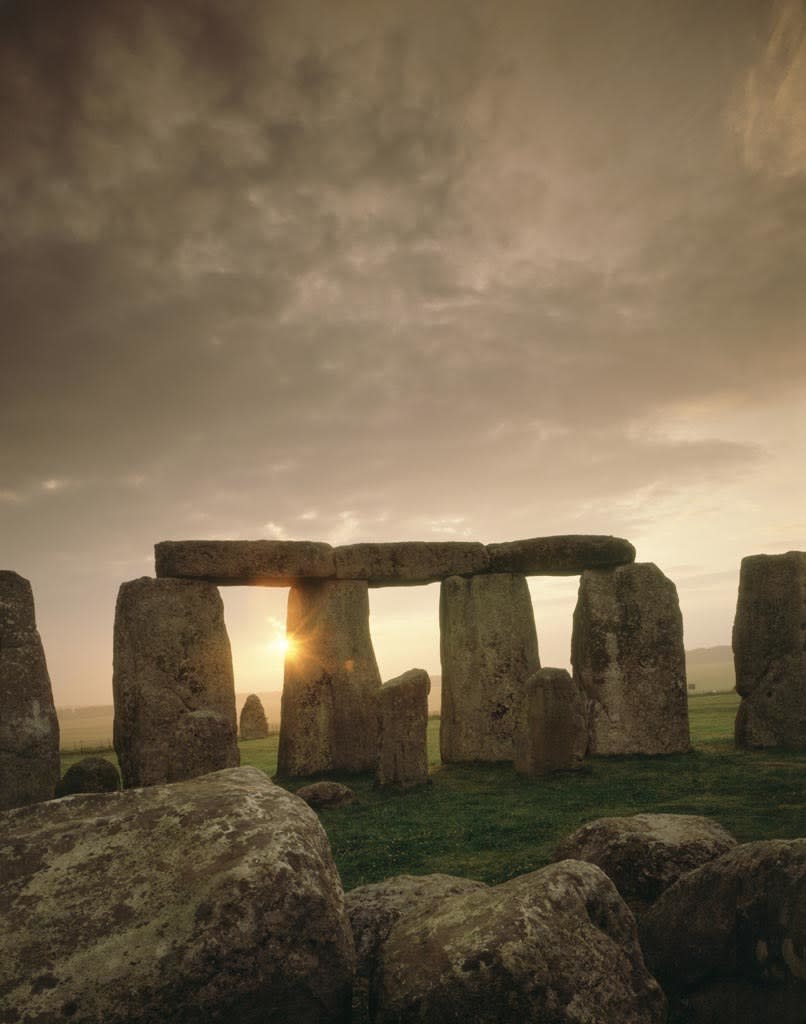
VB34138413
Photo: VisitBritain.comThe origin of Stonehenge, in Wiltshire, southwest England, has been the subject of many theories. The original purpose of the 5,000-year-old ring of standing stones—each measuring around 13 feet high and weighing around 25 tons—remains unknown, but it has been a place of celebration at summer solstice for thousands of years. English Heritage, which maintains the prehistoric site, opens up Stonehenge for solstice, providing a rare chance to get up close to the mysterious stones. Thousands of visitors, many colorfully costumed, spend the night of June 20 here in order to witness the sunrise. If you stand inside the ring, facing northeast through the entrance, you'll see the sun rise above the Heel Stone, a single block just outside of the circle.
Ring of Brodgar, Scotland
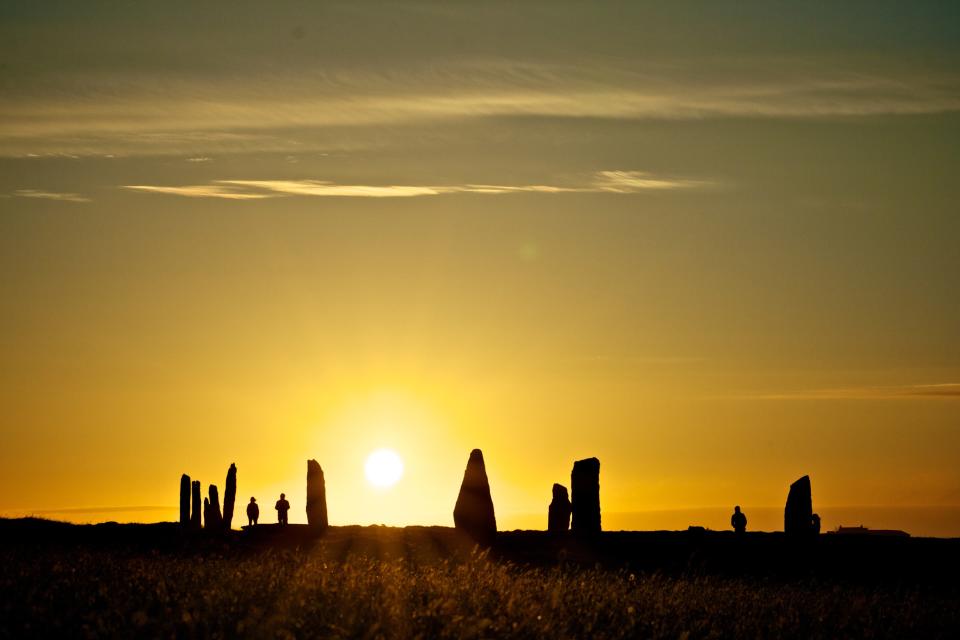
Ring of Brodgar at Sunset, Orkney
Photo: Orkney.comIn June, night is brief on Scotland’s Orkney Islands. The sun dips only barely below the horizon, creating an overnight period of twilight known locally as “simmer dim.” So expect a very early wake-up call (or late night) if you want to celebrate summer solstice. At 3 a.m. on June 21, pagans will begin a summer solstice celebration at Ring of Brodgar, a Neolithic stone circle on the Orcadian island of Mainland. Thought to date from 2500 B.C., the stones of Ring of Brodgar, also known as the Temple of the Sun, align with sunset and sunrise on the solstices.
The Great Pyramid of Giza, Egypt
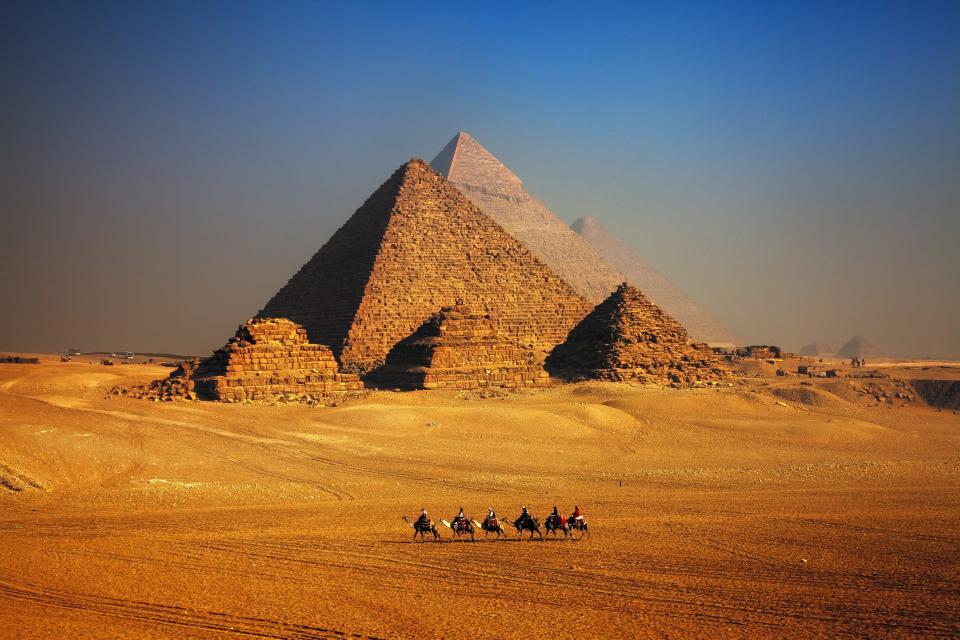
Pyramid caravan
Photo: Getty ImagesCompleted around 2560 B.C. for Pharaoh Khufu, the Great Pyramid of Giza continues to reveal long-hidden secrets, Just last year, researchers discovered a previously unknown room above the pyramid’s Great Gallery. For centuries, Egyptologists have proposed differing theories about the construction of the six pyramids that make up the complex just outside Cairo—with various claims about how they were built, by whom, and why. Visit at solstice and you’ll be convinced that the elements guided their exact positions. If you stand directly in front of the Sphinx, you will see the sun set precisely between the pyramids of Khafra and Khufu. And what’s more, this spectacle forms an image that replicates the Egyptian hieroglyph “Akhet,” meaning “horizon.”
Chichen Itza, Mexico
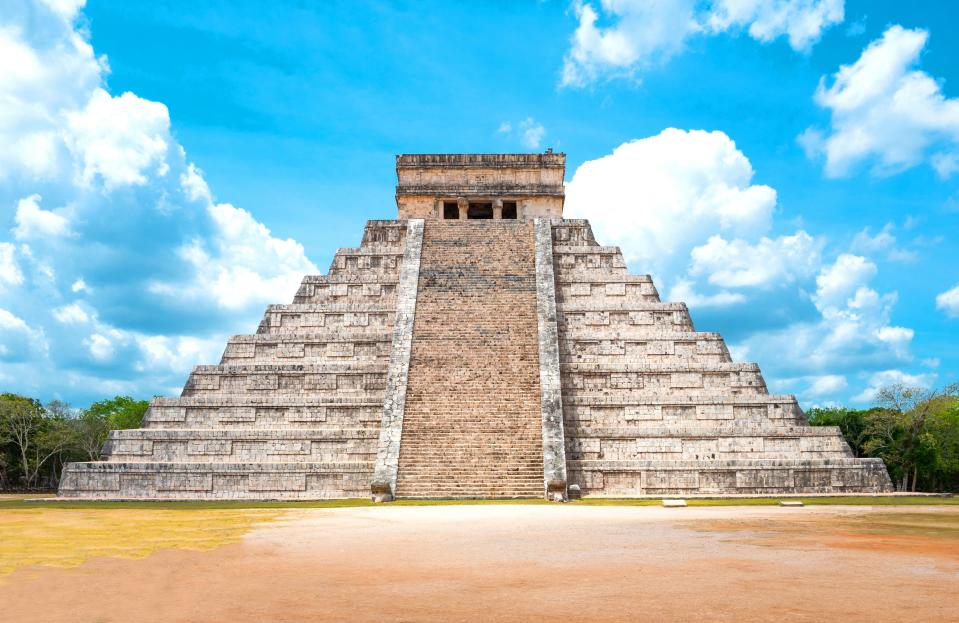
Chichen Itza. Mexico. Archaeological Site. View of the Imposing Castle (el Castillio)
Photo: Getty ImagesThe step pyramid of Chichen Itza is best known for the dramatic light play of the spring equinox, when the setting sun casts a shadow of a serpent slithering down the northern steps. Almost as impressive, though, is the spectacle of solstice. Constructed by the Mayans between 1000 and 1200 A.D., the axes running through the pyramid’s northwest and southwest corners are oriented toward the rising point of the sun at the summer solstice and its setting point at the winter solstice. At summer, the north and east sides are illuminated while the south and west sides are covered in shade, creating the effect of splitting the pyramid in two.
Jantar Mantar, New Delhi
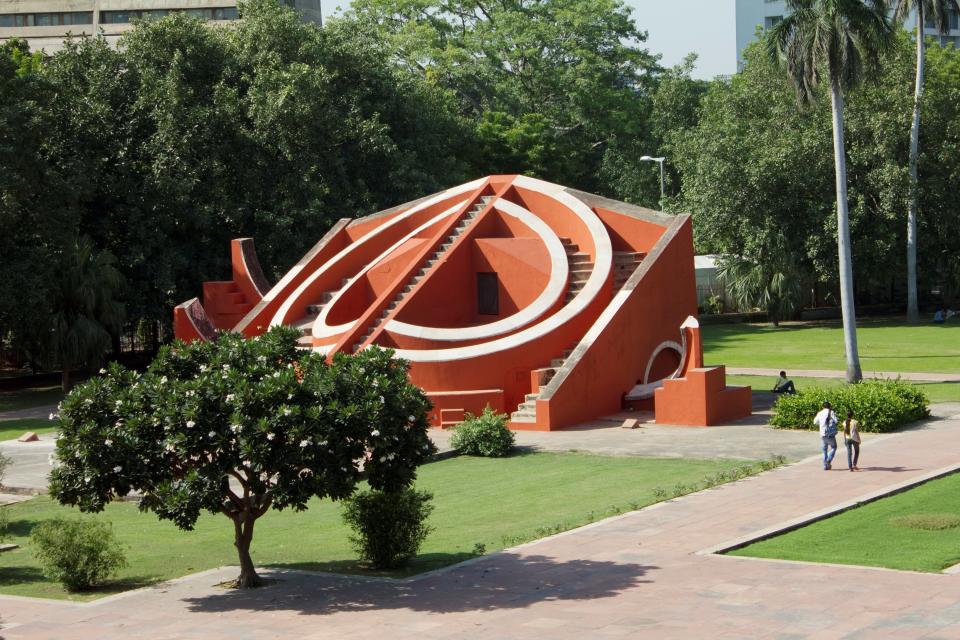
Jantar Mantar
Photo: Getty ImagesIn the early 18th century, Maharajah Sawaii Jai Singh II of Jaipur built five astronomical observatories in north India: Jaipur, New Delhi, Varanasi, Ujjain, and Mathura. The New Delhi Jantar Mantar consists of 13 stone instruments for predicting time, measuring the position of celestial bodies, and determining latitude. These include the Brihat Samrat Yantra, a huge sundial that accurately gives the local time in New Delhi, and the Mishra Yantra, designed to determine the shortest and longest days of the year, as well as indicate the exact moment of noon in cities around the world. At winter solstice (the shortest day of the year), one pillar completely covers the other with its shadow, while at summer solstice (the longest), it casts no shadow.
Sun Tunnels, Utah
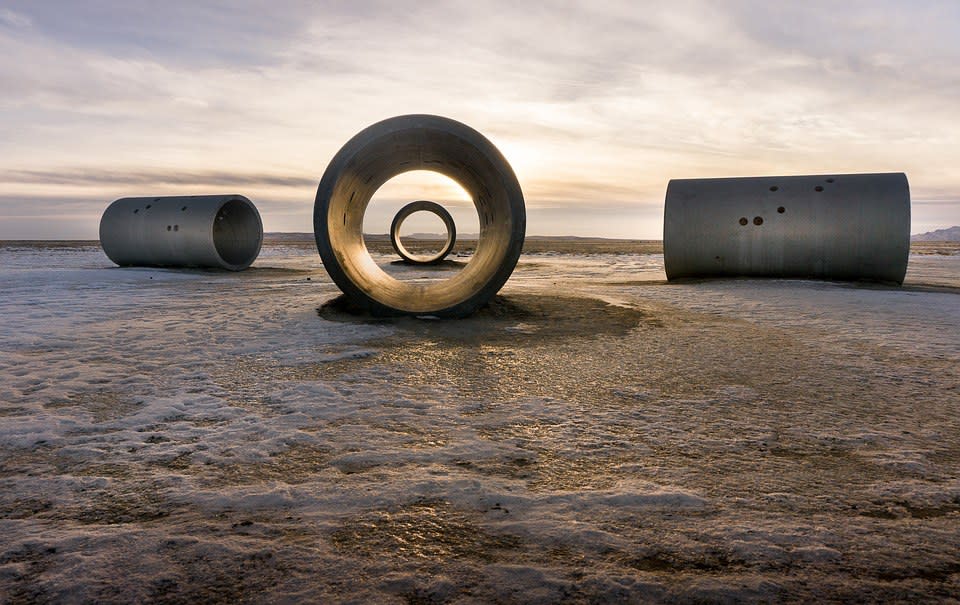
The late American land artist Nancy Holt said that the idea for Sun Tunnels came to her while watching the sun rise and set in a remote valley in the Great Basin Desert. The work, which Holt completed in 1976, comprises four concrete cylinders (18 feet in length and nine feet in diameter) arranged in an open cross format and aligned to frame the sun on the horizon during the summer and winter solstices. The site is maintained by the Dia Art Foundation, which advises visitors to come prepared with enough food, fresh water, and fuel to last through any adverse weather events: The nearest facilities are 45 minutes away.
Chaco Canyon, New Mexico
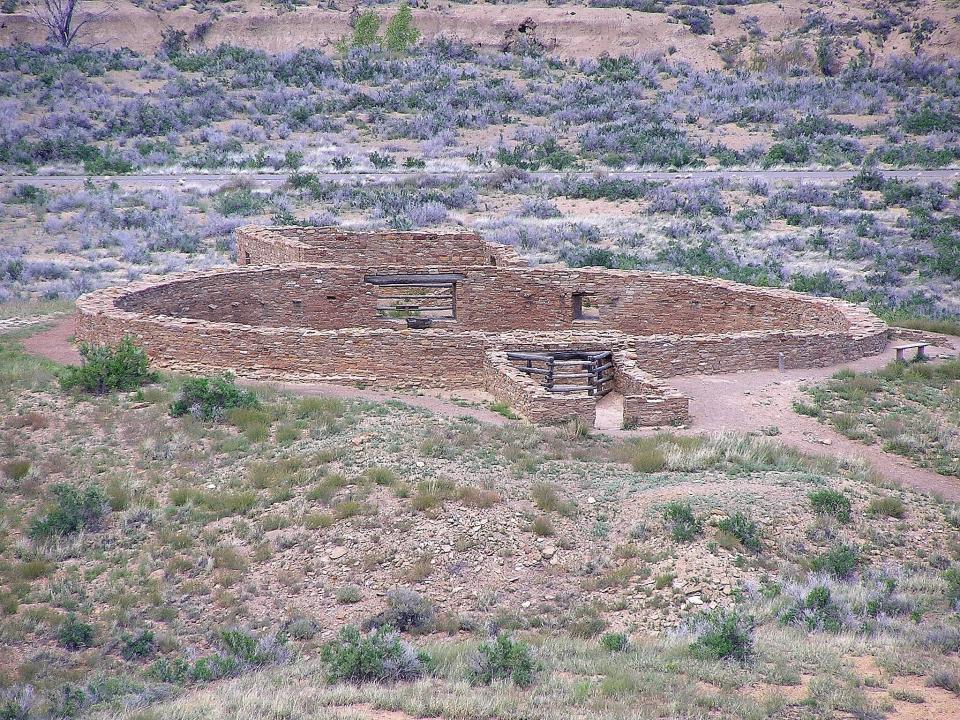
Home to a thriving Pueblo culture between the years 850 and 1250, the sandstone buildings of Chaco Canyon were designed to align with the movement of the sun, moon, and stars. Multiple hiking trails through the now–National Historic Park make for fascinating exploration, and on summer solstice you can join rangers inside the great kiva Casa Rinconada to observe the light of the sunrise as it marks solstice. Chaco Canyon is a day trip from Albuquerque (a three-and-a-half-hour drive), so visitors often spend the night at that city’s Hotel Chaco, designed by Gensler. The architects spent a few nights camping in Chaco Canyon in order to study its architectural elements, colors, and light patterns, and then aligned the hotel itself to the movement of the sun and moon. The hotel’s pale stone masonry façade, wooden accents, and circular lobby and entrance are each a nod to key architectural elements of Chaco Canyon.
Related: Plan Your Next Vacation Around These Incredible Music Festivals

